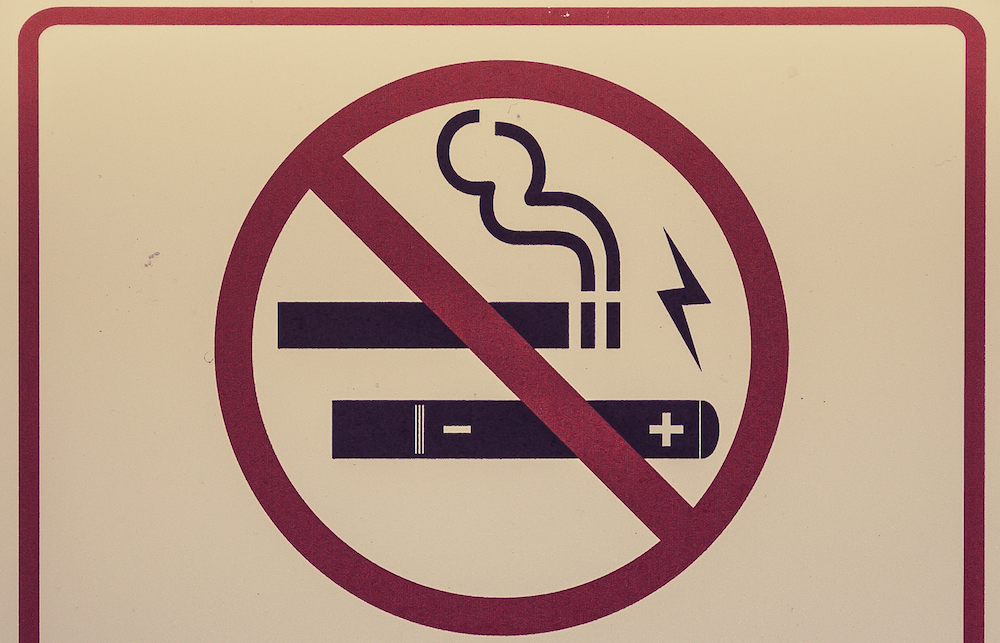California residents voted in the November 8 midterm elections to ban the sale of almost all flavored nicotine products, as the Associated Press confirmed. Only hookah and some premium cigars are exempt.
By the morning of November 9, with only 42 percent of the ballots counted, the result was already clear: More than 62 percent of counted votes were in favor of Proposition 31. That means the state will become the second, after Massachusetts, to prohibit retail sales to this extent, and the fifth to pass some version of a vape flavor ban. Many adults who use vapes to quit cigarettes find flavors helpful or even vital—but that reality has long been drowned out by the national outcry over youth vaping.
“It’s a sad day when adults who use safer alternatives are prohibited from legally purchasing [essentially] any.”
The legislation in question, SB 793, was delayed by determined resistance from tobacco harm reduction (THR) advocates and the industry. It was passed by California lawmakers in 2020, but legal challenges bought its opponents a two-year window. Now, that window has closed.
The law, set to take effect imminently, also bars so-called “flavored enhancers,” preventing a person from purchasing flavored e-liquid with no nicotine and adding it to flavorless nicotine at home. It also seems to preemptively ban the sale of any flavored products—including menthol—that might one day receive marketing authorization from the Food and Drug Administration (FDA). So far, the agency has authorized just a handful of tobacco-flavored vaping products, most them manufactured by companies directly owned by, or with significant financial ties to, Big Tobacco.
“It’s a sad day when adults who use safer alternatives to traditional combustible tobacco products are prohibited from legally purchasing [essentially] any,” Stefan Didak, a California-based THR advocate involved with the “no” campaign, told Filter.
Anti-vaping billionaire Michael Bloomberg took a winning lap on Twitter.
Not long after the polls closed on November 8, anti-vaping billionaire Michael Bloomberg, who had provided the lion’s share of the funds raised by the committee in favor of Prop. 31—reportedly up to $29 million—took a winning lap on Twitter. He wrote that “the vote in California is a major victory,” and “it shows that with enough organization and campaign support, the tobacco industry can be beaten.” (The industry, by comparison, spent only a couple million dollars—evidence, many observers have pointed out, that it probably viewed Prop. 31 as a lost cause in the end.)
“By voting ‘yes’ on Proposition 31, Californians have taken a big step toward ending the nation’s teen vaping epidemic,” Bloomberg continued, failing to clarify that teen vaping levels have sunk since the original panic in 2019. “For years the tobacco industry has preyed on young people, spending hundreds of millions of dollars to market candied-flavored products that are a known gateway to a lifetime of tobacco use, which is one of the leading contributors to disease and death across the US.”
Vaping nicotine, however, has in no way been established as a “gateway” to combustible cigarette use. Actually, the opposite looks to be true: A study published in JAMA Pediatrics by the Yale public health researcher Abigail Friedman showed that teenagers were more likely to start smoking than those in other US school districts after San Francisco’s flavored vape ban passed; another study by Brown’s Natasha Sokol and Harvard’s Justin Feldman, which appeared in Nicotine & Tobacco Research, suggested that youth who do vape are typically those who would have been smoking were vapes unavailable.
“It is a calamity that over 20 million American adults will soon find it easier to buy Marlboros than satisfying smoke-free alternatives.”
More than 100 local jurisdictions in the state have already banned some form of flavored nicotine ban. But California as a whole is on an entirely different scale.
“It is a calamity that over 20 million American adults will soon find it easier to buy Marlboros than satisfying smoke-free alternatives,” Greg Conley, the director of legislative and external affairs at American Vapor Manufacturers, told Filter. “Unquestionably, a lot went wrong in California over the years. However, even had the industry done everything right, it’s hard to believe we could have prevailed over the new model of selective prohibition that seems to have won over California voters.”
Photograph by Tony Webster via Wikimedia Commons/Creative Commons 2.0





Show Comments